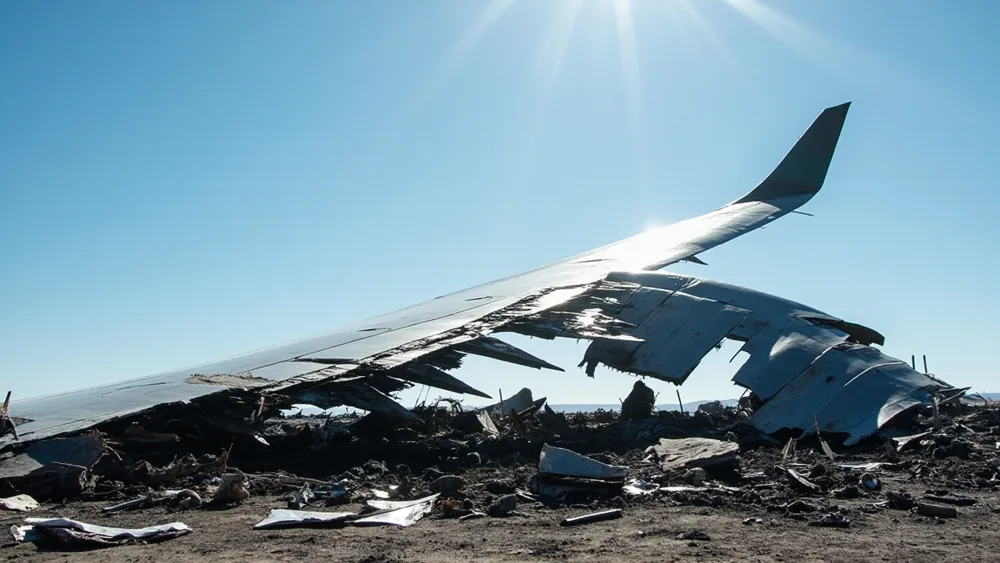Air India Boeing 787 Crash: Implications for Aviation Safety and Market Dynamics

The recent crash of an Air India Boeing 787 Dreamliner shortly after takeoff in Gujarat, killing 270 people, underscores not just a tragic loss of life but also significant implications for aviation safety standards worldwide. As the first fatal incident involving the Boeing 787, this disaster raises critical questions about aircraft reliability, regulatory scrutiny, and the collective responsibility of stakeholders to maintain rigorous safety protocols. With air travel experiencing a resurgence post-pandemic, the spotlight shines upon manufacturers, airlines, and regulatory bodies to ensure that safety is not an afterthought but a primary focus.
Air India’s incident occurs in a context where the aviation sector has largely rebounded from the disruptions of the COVID-19 pandemic, evidenced by substantial increases in passenger numbers and flight schedules. However, this crash starkly reminds us of the potential pitfalls that accompany rapid growth. Data from Cirium indicates that Air India had bolstered its fleet with modern aircraft like the Dreamliner, which is reputed for its fuel efficiency and range. Yet, the very scale of investment in fleet modernization comes with heightened responsibility regarding safety protocols. The aircraft’s quick descent—losing altitude almost immediately post-takeoff—calls into question various operational aspects, from maintenance rigor to pilot readiness. Past incidents have shown that it is often a convergence of factors rather than a single failure that leads to such catastrophic outcomes.
The implications for Boeing are particularly pronounced. The company has been grappling with a series of operational challenges and recalls in the wake of other safety concerns with its 737 Max jets. Financial analysts, such as those from Wolfe Research, suggest that while this crash may not immediately affect production ramp-ups, it is likely to dampen sales momentum until the investigation yields clarity. A common misconception is that investor confidence can remain unfazed by such tragedies; however, history suggests otherwise. In light of the 2008 financial crisis and the ensuing fallout on consumer trust, it is essential to understand that safety incidents can lead to a persistent shadow over brand reputation. The market is toying with the perception of risk versus safety, and Boeing will need to act decisively to mitigate any lingering doubts regarding its aircraft.
In conclusion, the Air India crash presents both risks and opportunities for stakeholders. For investors, it is crucial to monitor the forthcoming investigation outcomes closely, as air safety concerns tend to resonate deeply with consumers and can shape purchasing behavior. Additionally, regulators are likely to scrutinize Boeing more intensely, potentially leading to increased operational costs for compliance and safety enhancements—a landscape every investor must consider in their risk assessments. Will Boeing emerge from this cloud of uncertainty with renewed commitment to safety, or will this incident expose deeper systemic issues that could jeopardize its market position? Only time will reveal the answers, but for now, all eyes are on the investigation as the global aviation community seeks to uphold the highest standards of safety.
Read These Next

Jimmy Buffett's $275M Estate Battle Highlights Risks of Family Trusts
The article discusses the ongoing legal dispute over Jimmy Buffett's estate, revealing the complexities and risks associated with family trusts, especially in light of significant generational wealth transfers. It highlights the tensions between the beneficiaries and trustees and raises critical questions about estate management and planning.

China's Central Bank Launches 400 Billion Yuan Reverse Repo Operation
PBOC will conduct a 400-billion-yuan reverse repo on June 16 to ensure ample liquidity in China's banking system.

Strategic Share Repurchase: Insights into Company Financial Performance and Future Outlook
Analysis of the company's recent share repurchase activity and its implications for financial performance and governance.
